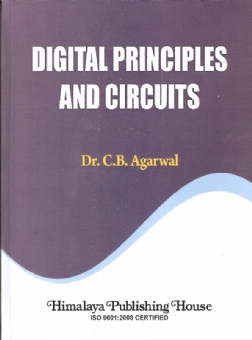Digital Principles and Circuits
no information available
This book ‘Digital Principles and Circuits’ has been written with a view to presenting the subject of Digital Electronics in an easier way to understand. However, the reader is required to have the elementary knowledge of semiconductor theory of transistors and MOSFETs. This book particularly caters to the need of the students of BCA, MCA, BE /B. Tech, AMIE and Diploma in Electronics Engineering of various Universities according to their syllabus. The contents of the book intensively deal with the principles of Digital Electronics and their applications in the formation of logic devices, circuits and systems. There are ten Chapters contained in the book. First Chapter introduces with the commonly and terms and the basic concepts involved in the subject. Second Chapter describes the systems of decimal, binary, octal and hexadecimal numbers and their interconversion. In the third Chapter different binary codes are discussed. Fourth chapter explains the functioning of logic gates and their formation. Classification, characteristics and merits/ demerits of digital IC families are also described in details. Chapter 5 incorporates Boolean laws and theorems as well as the map methods and their applications for simplifying logic expressions. Chapter 6 explains how the combinational circuits for adders, subtractors, multiplexers, demultiplexers etc. can be realized. Flip-flops and Registers are included in Chapter 7 while digital Counters and their designing are described in chapter 8. Chapter 9 contains the magnetic and semiconductor memory systems and tells how to expand their capacity. The last Chapter 10 discusses the circuits for digital-to-analog and analog-to–digital converters of different types. Contents- 1. Digital Concepts 2. Number Systems 3. Binary Codes 4. Logic Gates and IC Families 5. Boolean Aljgebra 6. Combinational Circuits 7. Flip-Flops and Registers 8. Digital Counters 9. Memory Systems 10. D/A Converters and A/D Converters ... Read more Read less











